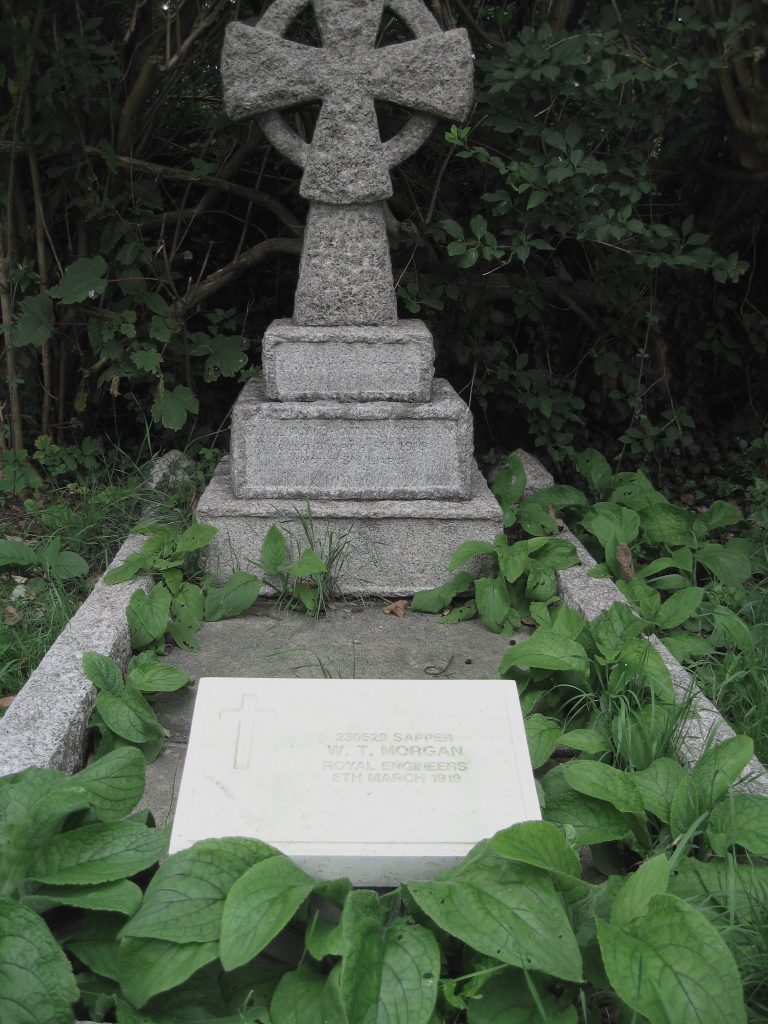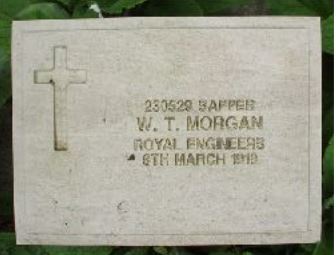415th Field Company, Royal Engineers

William Thomas Morgan was born in 1886 at Gloucester and was one of four children (two boys, two girls) born to Frank Milson Morgan and his wife Alice, who both originated from the Forest of Dean. Frank Morgan was a grocer, who died on 10 October 1908.
William lived at the family home of 92 Linden Road, Gloucester and upon leaving school trained to be a joiner and carpenter. On 22 August 1915 he married Hilda Williams at St Luke the Less Church, Gloucester and the couple lived at 1 Upton Street, Gloucester.
He attested for military service at Gloucester on 30 August 1916, at the age of 33 years and 9 months, stating his occupation to be a joiner and carpenter. Mobilization followed on 12 January 1917 and his posting to the 415th Field Company, Royal Engineers followed on 5 April 1917.
Although part of his Service Record has survived in the National Archives details of his postings are scant. The 415th Field Service Company was part of 65 (2nd Lowland) Division, a second line Territorial Force unit, which was sent to Ireland in January 1917: elements of the Division were spread across central Ireland from Dublin to Galway. Although the Division was disbanded following the Armistice it would appear that 415th Field Company remained there, as William died at Ballinrobe Military Hospital, also known as the Isolation Hospital, Workhouse, Ballinrobe (Co Mayo) on 6 March 1919, from bronchial pneumonia, the result of influenza. He was 33 years of age and had served in the Army for 2 years and 189 days.
According to the Gloucestershire Echo of 12 March 1919, his body was brought by train and ferry to Gloucester, where his coffin was met by a military escort and the first part of his funeral service took place at St Luke the Less Church, where he was married, before burial at Hempsted (St Swithun) Churchyard on 8 March. Although the CWGC record states his death was on 6 March the Gloucester Journal of 15 March states it to have occurred on the 5th. Attending the funeral were his widow, both brothers and sister and his mother. His grave was originally a private one, an area enclosed by a stone kerb overseen by a stone cross. Over the years the wording on the base of the cross had weathered considerably and latterly the CWGC has put in place a stone tablet on the grave, which bears details of name, rank, number, unit and date of death.
Latterly his widow went to live at 1 Cranham View, Stroud Road, Gloucester.

Researched by Graham Adams 28.2.21
